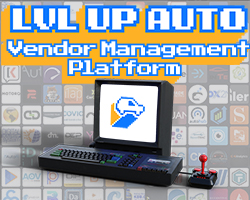When someone chooses to do business with your dealership and brings their vehicle in for service, they are no longer a prospect anymore, they have become an “active customer.” Chances are, you did many things right and well to make them an active customer, but if you aren’t proactive and you fail to change the relevancy of your communications right away, you could be at risk of making a bad impression.

At industry events such as NADA and the Digital Dealer Conference and Expo, the aisles are laced with booths for ad agencies and marketing companies telling you that your existing customer database is an untapped goldmine filled with previous and potential customers that already know you and need what you provide. All you need to do is stay in front of them.
But how and when and with what message and information? And which medium – email, phone, text?
Sales and service customers both need warranty work and routine maintenance. Service customers need more extensive service and parts while parts customers are buying parts and accessories for the very same vehicles you service. There is literally no segment of your existing customer base that wouldn’t benefit from special offers and incentives from your service department.
Or is there?
[highlight color=”#cc652d” font=”#ffffff”]
Free Download: SMS Compliance Guide for Auto Dealers
[/highlight]
If a service customer was in last week for routine maintenance, he or she doesn’t need to know about your seasonal or weekly specials right away. What is a good length of time before you should attempt to activate them again? Do you wait for them to make a buying signal or do you reach out after a set amount of time?
More importantly, what about the time frame from when the now “active customer” makes the appointment to when she completes the appointment? What sort of communications are most relevant during this time period and what should be the purpose or objective of those communications?
Communicating with Active Customers
This is where the art of active customers. You no longer need to get the customer to schedule an appointment, but wouldn’t it be ideal to build additional trust and rapport during this time by preparing them on what to expect, and paving the way for an exceptional experience.
Your concern now is making sure they have the best experience possible. There should be an immediate shift in how you communicate with active customers. Build trust with transparent and sincere communications that demonstrate how you will take the best possible care of them and their vehicle.
Ideally you do this consistently with all customers no matter who is their service advisor. Appointment confirmations, appointment reminders, status updates, requests for feedback, thank you rewards, etc. are all things that can and need to be deeply relevant and personalized through the use of modern technology using the customer’s preferred method of communication being it phone, text, or email.
Marketing is a wonderfully useful tool that is often misunderstood as something strictly to get more business. Unfortunately, this causes many dealers to misuse or underutilize this tool which results in confusing and alienating customers by taking the personal touch out of the customer experience.
With today’s data and technological capabilities, dealers have an opportunity to create the ultimate customer experience by implementing intelligent strategies with precision accuracy. Doing this with “active customers” is equally if not more important than getting them to that point.






